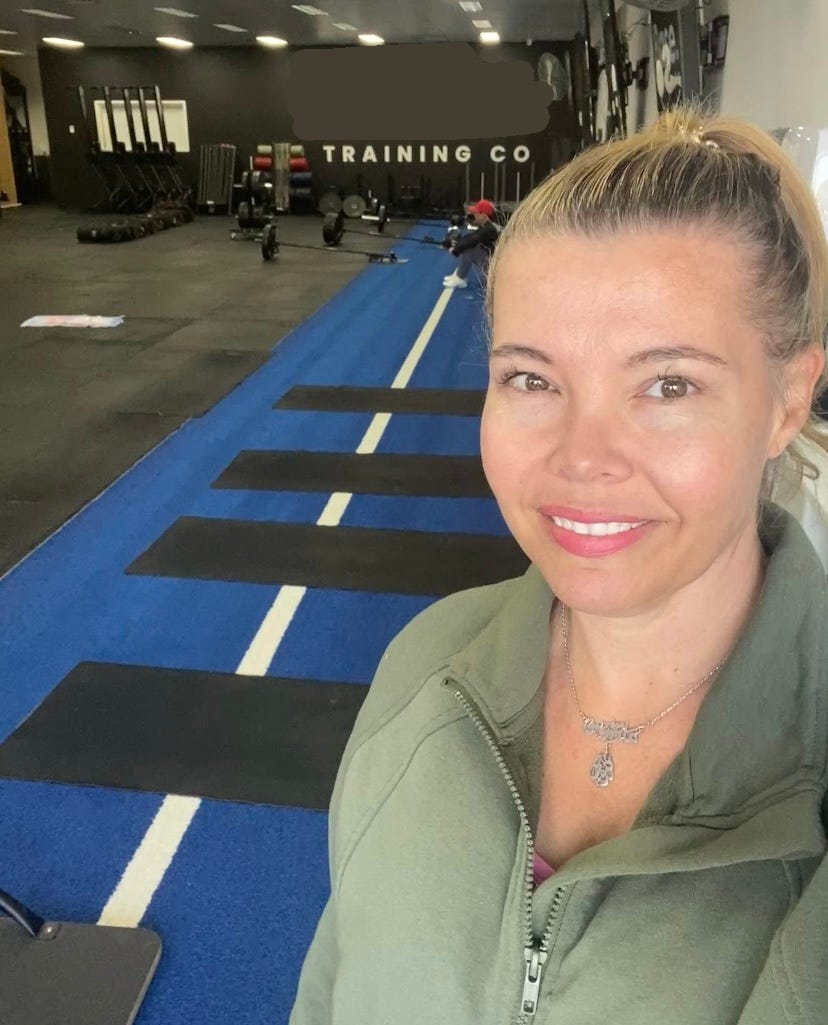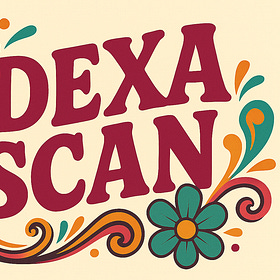Not the Peak, but the Pillars
How peri taught me to swap perfection for persistence (and build a toolkit that actually works)
It’s been a while since I’ve written about the peri/meno stuff. I’m still very much living it, but I’ve reached a stage where I no longer need to talk about it every five minutes; instead, I focus on actually walking the talk and integrating the changes.
What I am good at (hello, ADHD) is hyperfocus. Especially when something is really impacting me or my family, I dive in headfirst. Honestly, it feels like I’ve done a full undergrad degree in menopause studies. And if there’s one thing I know, it’s that there is no “set and forget” solution,
and absolutely no one-size-fits-all approach.
It took me years of feeling like crap before I even cottoned on to the fact that what I was experiencing was perimenopause. Had I known earlier, maybe I could have prevented some of the heartache and challenges. But as the saying goes, “You either win or you learn.” (Pretty sure that’s Nelson Mandela.)
I’ve chosen to use what I’ve learned to make my life better, and to help other women do the same. My inbox is full of friends and followers asking for guidance because they feel clueless. While I don’t pretend to have all the answers, I am tenacious enough to keep digging, to keep questioning, and to keep reminding women not to give up.
Because it does get exhausting when you’re dealing with doctors or even other women who dismiss you with an “it’s just part of getting older” pat on the hand.
As my wonderful menopause-informed doctor says:
“If she tells you she’s suffering, believe her.”
And while there’s no one-size-fits-all, I’ve built a toolkit for myself, pillars that aren’t all that different from what I’d emphasise if I were coaching someone for weight loss. For me, it looks like this:
Nutrition – fuelling myself well without obsessing. More home-cooked meals, less of the all-or-nothing mindset. But nutrition does look different at this stage of life. Anti-inflammatory and a focus on protein and fibre.
Connection – chats with friends, the gym buddies who nudge me to show up, and those long walks that double as therapy sessions with girlfriends.
Sunlight – morning walks and that sip outside to anchor my body clock and boost my mood.
Sleep hygiene – boring but vital. Phone down, book up, lights out earlier than my old night-owl self would ever believe.
Stress management – learning to step back, setting boundaries and saying no, and reminding myself the world won’t fall apart if I don’t do everything at once.
Natural therapies and supplementation – carefully chosen supports that give me a nudge in the right direction when I need it.
Mental health support – therapy, journaling, and having safe spaces to talk honestly.
Movement – strength training, walking, stretching. Adjusted to what I can handle on any given day.
Medicine (if needed) – including HRT, which has been a gateway back to myself.
Alcohol - reduction or elimination. For me, I haven’t really enjoyed drinking for almost a decade, and I’m pretty close to teetotal now. It adds no value to my life.
That mix shifts depending on what season I’m in, but those are the anchors that keep me afloat.
Before peri hit, I was always active and sporty. From 2015 to 2021, I’d become the fittest I’d ever been; strong, energised, and dialled in with my nutrition. So much so, I became a weight management coach and even wrote my book, The Body Plan, to share what worked for me.
But then peri hit. The tools that once worked so well suddenly didn’t. Cue the extreme fatigue, body aches, and joint pain, just to name a few. The gym fell off my priority list, my regular walks dwindled, and my body felt like it wasn’t my own.
HRT opened the door for me to return to the gym. Literally the week after I started HRT, I joined my first gym in three years.
So am I back to where I was in 2020 at my peak? No. And I have no expectations to be. But I’ve been slowly building back up. I started with one or two days a week at the gym doing my own thing. Then, earlier this year, a friend encouraged me to join group-style classes, with the promise that there wouldn’t be any super-fit twenty-somethings in matching sets. (I’m flat out getting my socks to match at this stage of life!) To my relief, I found a group of approachable gym-goers and genuinely lovely trainers who understand our particular injuries, limitations, and goals.
For the first two months, I attended one strength class per week.
Once I felt strong enough, I added a second.
I stayed at that pace for several months, then about a month ago, I finally added a third class.
Something I used to do so easily years ago has become a rollercoaster of training and crashing. I definitely don’t have the same endurance I once had, but pushing myself to get three strength sessions in each week—alongside my walks—has been an achievement I’m proud of. Peri doesn’t joke around with me, so compassion for myself has become just as important as the reps.
And you know what? I may never reach that peak again. But that’s not the point anymore.
These days, I work out for medical reasons. For strong bones and muscles. For what I call my nursing home prevention plan—my insurance against premature interventions.
Exercise supports my mood, steadies my energy levels, and helps me feel more like myself. That said, I’ve had to learn to be mindful of the ebb and flow. When I’m good, I’m really good, but when I’m not… I crash.
I’ve been working with an exercise physiologist on goals tailored to me, supported by body composition and DEXA scans. And while I used to happily write my own programs, this year I joined a group fitness gym. I needed the motivation of working out alongside others, guided by trainers who are not only supportive but genuinely fun.
And here’s the unexpected gift. I’ve met training buddies. People who encourage me to show up, and sometimes even walk or grab a coffee together afterwards. The gym has shifted from something to dread to something I actually look forward to.
Last week, one of the trainers even noticed my consistency and commented on it. I laughed and said, “Well, if I’m paying for three classes a week, I’ll be turning up for three classes a week!”
Some days, my 100% is just showing up to the gym; other days, it’s hitting my maximum personal bests.
It’s not perfection. It’s persistence. And in this stage of life, that feels like a win.
If you’re navigating peri- or menopause, consider starting by building your own toolkit, one pillar at a time. Choose the option that feels most manageable at this time and let that be your starting point. You don’t need to overhaul everything at once, and you don’t need to do it perfectly. Small shifts stack up. And sometimes, the biggest win is simply showing up for yourself.
You may also like…
Why I’m Glad I Got a DEXA Scan Before My 60s
Recently, I had my very first DEXA scan. If you’ve never heard of it, it’s a simple, non-invasive way to measure your bone density, muscle mass, and body fat distribution. I decided to do it because I’m in what I call my rebuild phase after a few years of not feeling great. I’m working on improving my health, strength, and vitality as I edge through per…
Wow. Holy shit! We did it. 35km The Bloody Long Walk.
In April, when a friend casually flipped out a “Do you like walking? Want to do the Bloody Long Walk in June?” I was mildly interested. I’d seen it online and was curious about doing it, but I thought I was a bit out of shape for it.








